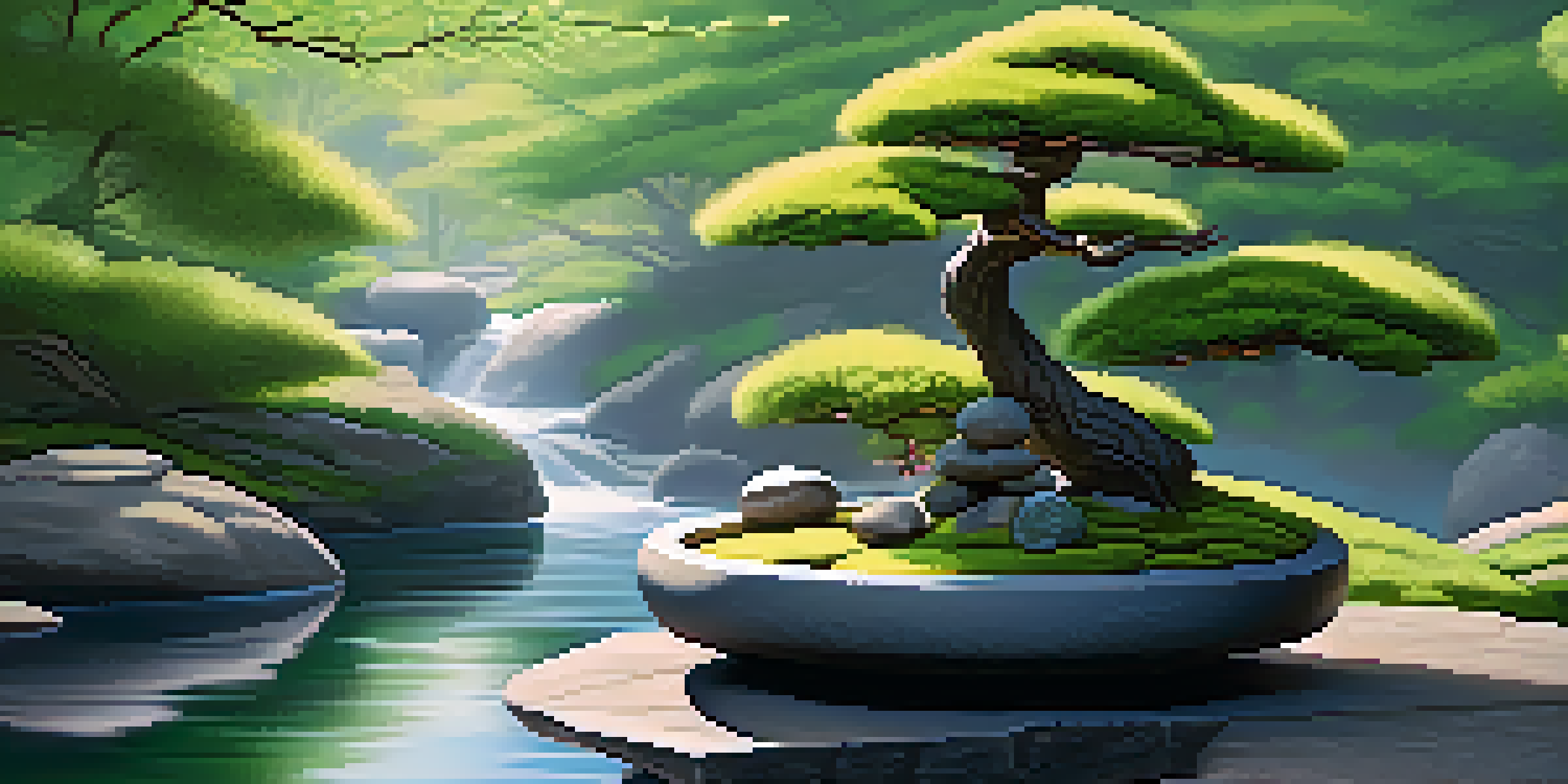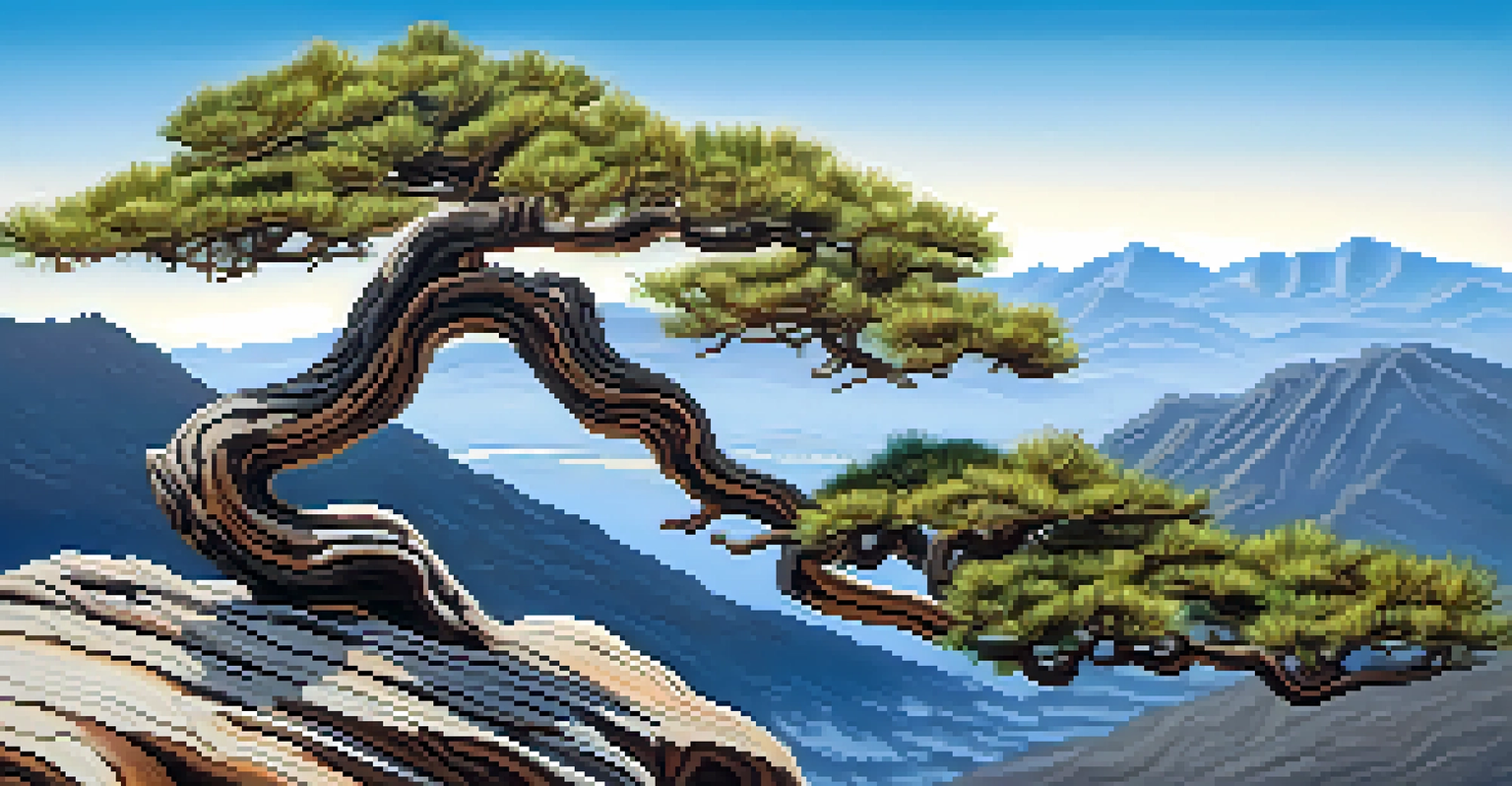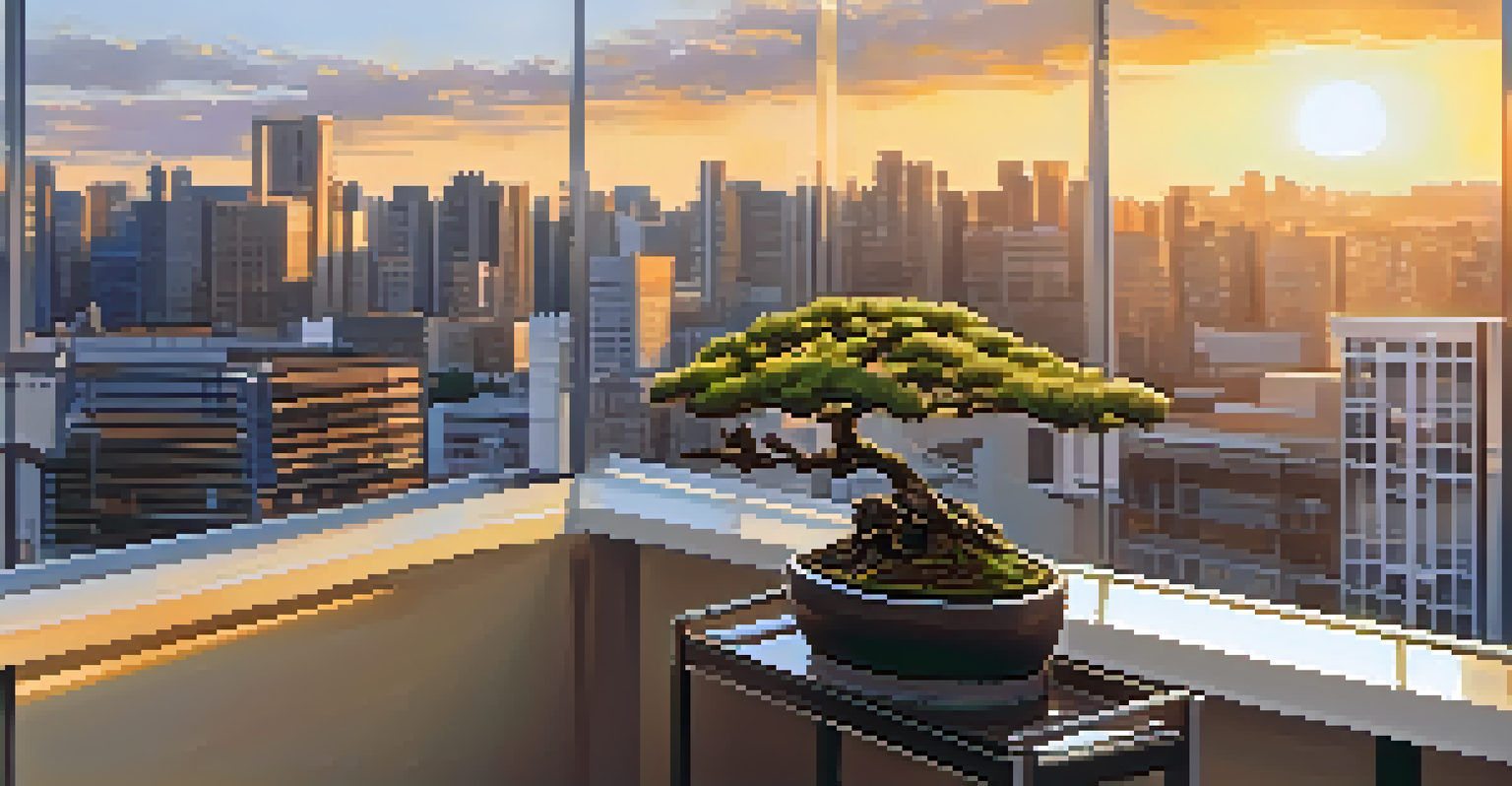The History of Bonsai: Cultural Significance and Evolution

Origins of Bonsai: A Journey Through Time
Bonsai, meaning 'planted in a container,' traces its origins back to ancient China. The practice began over a thousand years ago, where it was influenced by the Chinese art of penjing, which involved creating miniature landscapes. As this art form made its way to Japan, it underwent significant transformations that shaped what we recognize as bonsai today.
The greatest gift of the garden is the restoration of the five senses.
In Japan, bonsai became more than just a hobby; it evolved into a cultural symbol representing harmony with nature. The meticulous care involved in growing bonsai reflects a philosophy of patience and dedication, resonating deeply with Japanese aesthetics. Thus, bonsai became a bridge between nature and human expression, embodying beauty in simplicity.
As bonsai spread across the globe, it adopted various forms and styles influenced by different cultures. Today, it is appreciated not only for its aesthetic appeal but also for its ability to teach mindfulness and the importance of nurturing life. This journey through time showcases how bonsai has grown from a simple practice into a profound art form.
Bonsai Styles: A Reflection of Art and Nature
Bonsai isn't just one thing; it comes in various styles, each telling its own story. From the upright and formal to the cascading and slanting styles, each design reflects the natural growth patterns of trees in the wild. For instance, the 'formal upright' style mimics a tree that has grown straight up towards the sun, emphasizing strength and stability.

One of the most captivating styles is the 'windswept' bonsai, which represents resilience against the elements. This style illustrates how trees adapt to their environment, bending and shaping themselves over time. Such visual metaphors resonate with viewers, reminding us of our own struggles and the beauty of perseverance.
Bonsai's Rich Cultural Heritage
Bonsai represents a blend of artistry and deep cultural significance, particularly in Japan, where it symbolizes mindfulness and a connection to nature.
The variety in bonsai styles allows artists and enthusiasts to express their creativity while paying homage to nature's design. Each bonsai tree becomes a personal narrative, showcasing the artist's vision and emotional connection to the natural world. This interplay between artistry and nature is what makes bonsai a truly unique form of expression.
Cultural Significance of Bonsai in Japan
In Japan, bonsai is more than an art form; it holds deep cultural significance. Traditionally associated with Zen Buddhism, bonsai represents a meditative practice that encourages mindfulness. The act of nurturing a bonsai tree allows practitioners to cultivate patience and a deeper connection to nature, embodying the essence of Japanese philosophy.
Nature does not hurry, yet everything is accomplished.
Bonsai trees are often featured in Japanese gardens and homes, serving as symbols of peace and tranquility. They are frequently used in tea ceremonies and other cultural practices, emphasizing the importance of nature in daily life. This integration showcases how bonsai transcends mere decoration, becoming a vital part of Japanese heritage.
Moreover, bonsai has become a means of storytelling within Japanese culture. Each tree has its own narrative, often reflecting familial ties or historical significance. By caring for a bonsai, individuals not only preserve the art form but also connect with their ancestors and traditions, fostering a sense of identity.
Bonsai in the Modern World: A Global Phenomenon
As the world becomes more interconnected, bonsai has emerged as a global phenomenon. People from various cultures and backgrounds are embracing this ancient art, adapting it to their own aesthetics and environments. This cross-cultural exchange has enriched the practice, leading to innovative styles and techniques that reflect a diverse range of influences.
In urban environments, bonsai offers a unique way to bring a piece of nature into people's lives. Small spaces can accommodate these miniature trees, making them a perfect choice for city dwellers who seek a connection to the natural world. As more individuals discover the joys of bonsai, its popularity continues to soar.
Diverse Styles Reflect Nature
The various styles of bonsai, from formal upright to windswept, illustrate the natural growth patterns of trees and allow artists to express their creativity.
Social media has played a significant role in this modern resurgence, with enthusiasts sharing their creations and experiences online. This has fostered a strong community of bonsai lovers who support and inspire each other. In this way, bonsai is not just a hobby; it has become a shared passion that transcends geographical boundaries.
The Techniques of Bonsai Cultivation
Cultivating bonsai requires a blend of artistry and horticultural expertise. Various techniques, such as pruning, wiring, and repotting, play a crucial role in shaping the tree's growth. Pruning involves carefully trimming away branches to encourage desired shapes and promote healthy growth, while wiring helps to guide branches into specific positions.
Repotting is equally important, as it ensures the tree has enough space to grow and access nutrients. This practice often takes place every few years, allowing the roots to spread while maintaining the tree's miniature size. Each of these techniques demands patience and attention, reflecting the commitment of the bonsai artist.
Through these methods, bonsai cultivators create living sculptures that tell a story of nature’s beauty. The process itself can be meditative, allowing individuals to connect with their trees on a deeper level. This hands-on approach not only fosters a bond with the bonsai but also cultivates a sense of accomplishment and pride in the artistry involved.
Bonsai as a Symbol of Peace and Harmony
Bonsai trees are often regarded as symbols of peace and harmony, representing the balance between nature and humanity. The meticulous care that goes into cultivating a bonsai mirrors the patience required to foster relationships and understanding in our lives. This connection between bonsai and personal growth makes it a powerful metaphor for peace.
In many cultures, gifting a bonsai tree signifies goodwill and positive intentions. The act of giving a bonsai often conveys a desire for harmony and tranquility in the recipient's life. This practice underscores the idea that bonsai is not only an art form but also a medium for expressing care and compassion.
Bonsai's Global Appeal Today
As a global phenomenon, bonsai has adapted to various cultures, fostering community and innovation while serving as a reminder of nature's beauty.
As we face challenges in our modern world, bonsai serves as a reminder to slow down and appreciate the beauty around us. Whether in homes, offices, or public spaces, these miniature trees inspire mindfulness and a sense of calm. In this way, bonsai transcends its aesthetic value, becoming a beacon of peace and serenity.
The Future of Bonsai: Trends and Innovations
As bonsai continues to evolve, new trends and innovations are shaping its future. Advances in technology, such as online workshops and virtual communities, are making it easier for enthusiasts to learn and share their passion. This accessibility is attracting a younger generation, ensuring that the art of bonsai remains vibrant and dynamic.
Sustainable practices are also becoming a focal point in bonsai cultivation. Many artists are now prioritizing the use of native species and organic growing methods, promoting environmental awareness. This shift not only enhances the ecological impact of bonsai but also connects practitioners more closely to their local ecosystems.

Moreover, contemporary artists are experimenting with unconventional designs and materials, pushing the boundaries of traditional bonsai. This innovation invites fresh perspectives and encourages dialogue among enthusiasts, ensuring that the art form continues to thrive. As bonsai moves forward, it will undoubtedly reflect the ever-changing relationship between people and nature.